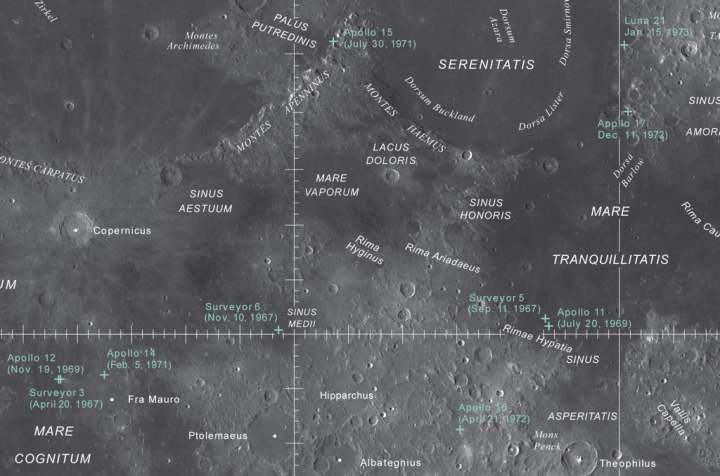
The stunning new maps replace the existing Lunar Chart (LPC-1), which was produced in 1979 as a series of airbrushed drawings based on existing telescopic and orbital lunar images. The chart was flat in design and did not provide any elevation data. The new maps, on the other hand, are derived directly from digital photographs and include both a photo mosaic of the moon’s surface and a topographic map that represents elevation data.
The photo mosaic uses images from LRO’s wide-angle camera and allows you to view prominent physical features such as craters and volcanoes on the moon’s surface. The topo map compiles the data obtained from the Lunar Orbiter Laser Altimeter (LOLA) which was installed on the LRO to collect elevation data. It represents lunar elevation in a gradient where blue is a low altitude and gray is a high altitude.
“These maps were designed to help both the public and scientists understand the overall appearance and topography of the moon,” said the USGS in a statement. The maps provide enough detail that amateur astronomers can compare features they see on their telescope with those on the map. It also allows enthusiasts to locate historically important features such as the Apollo landing sites from the comfort of their home.
Both of these maps were made possible by NASA’s Lunar Reconnaissance Orbiter (LRO), a car-sized robotic spacecraft that’s been orbiting the moon and mapping the lunar surface since 2009. The LRO was originally designed to provide detailed lunar information in preparation for future human and robotic missions to the moon. Since its launch, the orbiter has been collecting stunning images showing impact craters, hydrogen deposits, and more.



